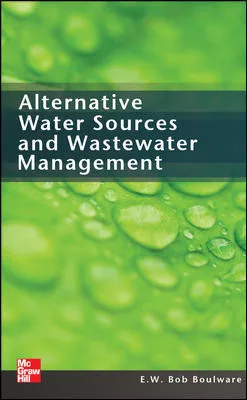Wire-To-Water
It’s hard to compare the efficiency of two processes, however, unless you define the word. The simplest definition is: For example, suppose a boiler uses one gallon of No. 2 fuel oil to yield 98,000 Btus of heat. How efficient was this conversion? Well, the output quantity is 98,000 Btus of heat. The necessary input quantity was one gallon of No. 2 oil. To make the formula work the input and output quantities must be expressed in the same units. It’s easy to convert gallons of No. 2 oil to energy, just multiply by 140,000 Btu/gallon. The efficiency of the process is thus:
Cirficiency: Hydronic circulators convert the electrical energy fed to their motors into mechanical energy that’s imparted to the system fluid. Remember the mechanical energy a circulator adds to a flowing fluid is called “head.” Every other piping component in the piping circuit removes head from the moving fluid. While operating, every hydronic circuit constantly seeks a flow rate in which the head added by the circulator exactly equals the head dissipated by the piping components. Change something in the system — like the setting of a balancing valve — and the whole system instantly readjusts itself to maintain this balance between energy input and energy dissipation.
You can apply the definition of efficiency to a circulator. The output quantity is the rate of mechanical energy transfer to the fluid. The necessary input quantity is the electrical power needed to run the motor. Formula 2 condenses all the physics into a relatively simple result: where:
E circulator = “wire-to-water” efficiency of the circulator (decimal %) D = density of the fluid being circulated (in lb/cubic foot) f = flow rate of fluid (in gpm) H = operating head of circulator (in ft of head) w = the wattage draw of the circulator’s motor (in watts)
Say that a small wet rotor circulator draws 77 watts of electrical power while producing a flow of 9.3 gpm. Its pump curve indicates a head of 9.6 feet at this flow rate. The fluid flowing through the circulator is water with a density of 60.7 lb/cubic ft. How efficient is this circulator?
Not exactly what you might have guessed, is it? And now for the bad news: If the circulator isn’t properly matched to the piping system, its efficiency will be even lower! Any centrifugal pump achieves its peak efficiency when operating near the center of its pump curve. Figure 1 shows this by plotting the wire-to-water efficiency of a small wet rotor circulator alongside its pump curve. Notice that the efficiency curve peaks out near the center of the flow rate range — in this case at about 9.3 gpm. Efficiency drops off on either side of this point.
To achieve near maximum efficiency a circulator should be selected so the intersection of its pump curve with the system head loss curve is within the center 1/3 of the pump curve.
Apple To Apples: Many of you have probably seen efficiency contours plotted over the pump curves of larger circulators. All the manufacturers have them. Just pick up a spec binder and have a look. What you’ll see are peak efficiencies in the range of 55-70 percent near the middle of the pump curves. Move away from this point in either direction along the pump curve and you’ll find the numbers on the efficiency contours dropping off. Again the ideal scenario is to select a circulator so that the intersection of its pump curve with the head loss curve of the piping system is close to the peak efficiency point.
How come the efficiency of these larger circulators is so much higher than the smaller wet rotor circulators? First, the wire-to-water efficiency of a small wet rotor circulator is not the same as the efficiencies represented by the contours plotted for larger circulators. The latter typically don’t include the efficiency of the motor. Instead they express the percentage of “shaft power” that’s converted into fluid power. Since the efficiency of motors converting electrical power into shaft power typically varies in the range of 60-80 percent (with higher horsepower motors generally having higher efficiencies) the overall wire-to-water efficiency of a pump/motor package will be the pump efficiency times the motor efficiency. For example, the wire-to-water efficiency of a pump operating at 65 percent efficiency powered by a motor operating at 75 percent efficiency is 0.65 x 0.75 = 0.49, or 49 percent (assuming there are no mechanical energy losses in the coupling assembly between the motor and pump).
Secondly, the small motors used on wet rotor circulators are not as efficient at converting electrical energy into mechanical energy as the motors used on larger circulators. Then there’s fluid drag against the wet rotor itself, which is not present in a dry rotor (external) motor. The clearance between the rotor and stator in a wet rotor design also reduces motor efficiency. The frictional power loss of the bushings is a greater percentage of the motor power in small circulators. All these factors combine to reduce the overall percentage of electrical energy that’s converted into flow energy.
Payback Time: About now you’re probably thinking small wet rotor circulators are real energy gluttons, and pump manufacturers should do some major re-engineering to get these efficiencies much higher. Well consider this: Increasing the peak efficiency of an 80 watt circulator from 20 percent to 30 percent (in itself a huge improvement of 50 percent) saves only 8 watts of power input. If we assumed such a circulator operated for 3,000 hours a year, and electricity was priced at 10 cents per kilowatt hour, the savings would be $2.40 per year. Now, if your cost for this new improved “Watt-Wringer” circulator went up by $60, would you willingly buy it over the current offerings? Could you sell your customers on the “payback” of such an investment? When was the last time a customer asked you about the energy usage of one small circulator vs. another?
Don’t get me wrong. Any gain in circulator efficiency is good. And pump manufacturers are always looking to improve the performance of their products. But the economic realities of the current North American market simply wouldn’t support a small high efficiency wet rotor circulator that costs significantly more than current products. In Europe it’s a different story. Much higher electrical costs lead pump manufacturers to use small efficiency advantages as sales ammunition. Considering the tens of millions of hydronic circulators in service over there, small efficiency gains collectively reap significant energy savings.
Be A Centrist: Since you’re probably not going to go out and create your own Watt-Wringer circulators, the next best thing is to select standard circulators so that the system’s operating point falls within the middle third of their curve. Don’t use higher head circulators in zone valve applications. On extensively zoned systems (using zone valves) compare the efficiency and cost parallel circulators to that of a single larger circulator.
When you do have some larger circulators to spec out, compare the efficiencies of wet and dry rotor contenders. And finally, if you just can’t bear the thought of 20 percent circulator efficiency, go to ISH this March and plead your case. Who knows, maybe you’ll find a 30 percent efficient wet rotor for your next project ... assuming of course that you can talk the utility into supplying you 50 Htz power.
Looking for a reprint of this article?
From high-res PDFs to custom plaques, order your copy today!







